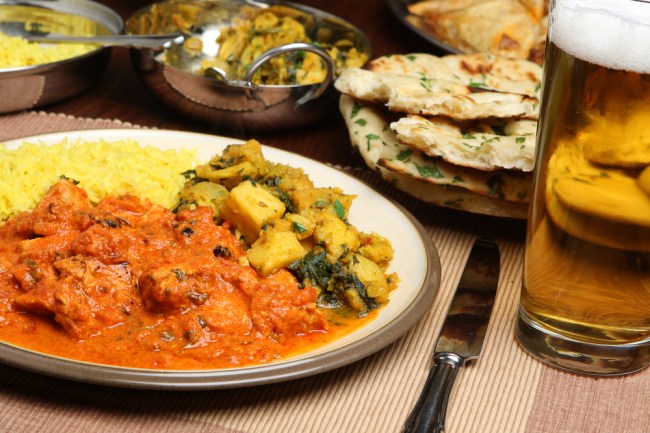
Whenever someone who’s obviously never had Indian food before asks me what makes it so good, I ignore the question and take another bite — the MacGyver-ed naan wrap on my plate isn’t going to eat itself. Like most fans of cury and cayenne, I eat everything first and ask questions later. However, according to The Washington Post, data researchers at the Indian Institute for Technology crunched the numbers and figured out what makes traditional recipes tick:
It does something radical with flavors, something very different from what we tend to do in the United States and the rest of Western culture. And it does it at the molecular level.
European and American dishes tend to utilize components with flavors that sometimes overlap one another, often in complimentary ways. Indian cuisine? Not so much:
They examined how much the underlying flavor compounds overlapped in single dishes and discovered something very different from Western cuisines. Indian cuisine tended to mix ingredients whose flavors don’t overlap at all.
“We found that average flavor sharing in Indian cuisine was significantly lesser than expected,” the researchers wrote.
In other words, the more overlap two ingredients have in flavor, the less likely they are to appear in the same Indian dish.
This doesn’t necessarily mean that cayenne, cardamom, and the other spices that make Indian food taste like heaven clash with one another. Rather, each serves a unique purpose in each dish they’re used in — even when combined with five or more additional ingredients.
Great, now I’m having a Pavlovian reaction to writing and reading about Indian food. Looks like takeout tonight and bathroom cleaning tomorrow.
(Via The Washington Post)
